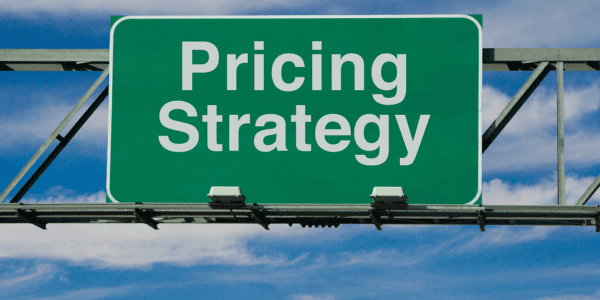In the competitive world of outdoor living design and hardscaping, pricing isn't just about covering costs—it's a strategic tool that can drive growth and profitability. According to the National Association of Landscape Professionals, the U.S. landscaping industry reached a market size of $153 billion in 2024, with 65% of landscaping businesses earning over $1 million per year . This booming market presents immense opportunities for hardscaping companies and outdoor living design/build firms to scale their businesses.Jobber+1landscapeprofessionals.org+1 - Source
However, many firms struggle with setting prices that reflect their value while remaining competitive. This challenge often leads to underpricing, eroding profits, or overpricing, deterring potential clients. By understanding and implementing effective pricing strategies, you can position your firm for sustained success.
1. Value-Based Pricing in Landscaping

Value-based pricing focuses on the perceived value of your services to the client rather than solely on costs or market rates. This approach is particularly effective in outdoor living projects where customization and client experience are paramount.
Example: Imagine designing a bespoke outdoor kitchen with high-end materials and unique features. Instead of calculating the price based on materials and labor alone, consider the value this addition brings to the client's lifestyle and property value.
Benefits:
Enhanced Profit Margins: By aligning prices with perceived value, you can command higher rates.
Client Satisfaction: Clients feel they are investing in quality and personalized solutions.
Implementation Tips:
Highlight unique selling points in your marketing materials.
Use testimonials and case studies to showcase value delivered.
Train your sales team to communicate value effectively.
According to Aspire, value-based pricing is the most profitable strategy for landscaping businesses .YourAspireSoftware - Source
2. Competitive Pricing for Hardscape Services

Competitive pricing involves setting your prices based on what competitors are charging for similar services. This strategy requires thorough market research to ensure your rates are attractive yet profitable.
Example: If most local competitors charge between $50 to $75 per hour for hardscaping services, positioning your rates within this range can make your offerings more appealing to price-sensitive clients.
Benefits:
Market Alignment: Ensures your prices are in line with industry standards.
Attracts Budget-Conscious Clients: Appeals to clients who are comparing multiple service providers.
Implementation Tips:
Regularly monitor competitor pricing and adjust accordingly.
Differentiate your services through added value or superior quality.
Avoid underpricing, which can lead to unsustainable profit margins.
Conducting a competitive pricing analysis helps identify opportunities to optimize your pricing strategy without compromising profitability .
3. Cost-Plus Pricing in Outdoor Construction

Cost-plus pricing involves calculating the total cost of a project (materials, labor, overhead) and adding a fixed percentage as profit. This transparent approach is common in construction projects where costs can be unpredictable.
Example: For a custom patio project, you estimate the total cost at $20,000. Adding a 20% markup, the client is quoted $24,000.
Benefits:
Transparency: Clients understand where their money is going.
Risk Mitigation: Protects your business from unforeseen expenses.
Implementation Tips:
Keep detailed records of all project costs.
Communicate clearly with clients about how pricing is determined.
Include clauses in contracts to address potential cost overruns.
Cost-plus contracts are favored in construction for their flexibility, especially in projects where the scope is unclear and subject to change. NetSuite+3inFlow Inventory+3ProjectManager+3 - Source
4. Tiered Pricing Packages

Offering tiered pricing packages allows clients to choose services that best fit their needs and budgets. This strategy can increase sales by catering to a broader audience.
Example:
Basic Package: Standard patio installation with basic materials.
Premium Package: Includes high-end materials, custom design elements, and additional features like lighting.
Luxury Package: Comprehensive outdoor living space with premium materials, landscaping, and smart technology integration.
Benefits:
Customer Choice: Empowers clients to select a package that aligns with their preferences.
Upselling Opportunities: Encourages clients to consider higher-tier packages.
Implementation Tips:
Clearly define what each package includes.
Ensure each tier offers distinct value to justify the price difference.
Use visual aids in marketing materials to illustrate package differences.
5. Dynamic Pricing Based on Demand

Dynamic pricing adjusts your rates based on demand, seasonality, or project complexity. This flexible approach can maximize profits during peak seasons and attract clients during slower periods.
Example: During the spring and summer months, when demand for outdoor projects is high, you may increase prices slightly. Conversely, offer discounts during off-peak seasons to maintain steady business.
Benefits:
Optimized Revenue: Capitalizes on high-demand periods.
Inventory Management: Helps balance workload throughout the year.
Implementation Tips:
Analyze historical data to identify demand patterns.
Communicate pricing changes transparently to clients.
Offer incentives for clients to book during off-peak times.
Conclusion
Implementing the right pricing strategy is essential for the growth and scalability of your outdoor living firm. Whether it's value-based, competitive, cost-plus, tiered, or dynamic pricing, each model offers unique advantages that can align with your business goals and client expectations.
By understanding and applying these strategies, you can enhance profitability, attract the right clientele, and position your firm for sustained success. Ready to take your business to the next level? Book a call with our agency to discuss your marketing needs as a growing business.
FAQ
Value-based pricing is considered the most profitable strategy as it allows businesses to set prices based on the perceived value to the customer, often leading to higher profit margins .YourAspireSoftware - Source
The markup percentage in cost-plus pricing typically ranges from 10% to 30%, depending on project complexity and market standards. It's essential to analyze your costs and desired profit margins to set an appropriate markup .
Regularly reviewing your pricing strategy, at least annually or when significant market changes occur, ensures your prices remain competitive and aligned with your business goals.
Dynamic pricing allows you to offer discounts or promotions during slower periods, attracting clients and maintaining a steady workflow throughout the year.
Ready To Get Your Marketing On A Better Track?
